Ohio State Researcher Develops PRRS Vaccine
September 6, 2013

A new porcine reproductive and respiratory syndrome (PRRS) vaccine, developed by Ohio State University (OSU) researchers, uses biodegradable nanoparticles to deliver an inactivated virus intranasally.
Unlike the current live vaccines used to prevent PRRS, the new vaccine uses an inactivated virus to eliminate adverse reactions in pigs, such as abortion, sick piglets and further spread of the disease, said Renukaradhya (Aradhya) Gourapura, an associate professor in OSU's Food Animal Health Research Program (FAHRP), part of the Ohio Agricultural Research and Development Center (OARDC).
The new vaccine is enclosed in biodegradable nanoparticles, which improves its efficacy and its absorption by a pig's immune system.
"Our tests have shown that two doses of this vaccine, administered intranasally along with a potent mucosal adjuvant, achieve 100% protection in pigs against genetically variant PRRS virus," said Gourapura, who started working on this project in 2009.
Like what you’re reading? Subscribe to the National Hog Farmer Weekly Wrap Up newsletter and get the latest news delivered right to your inbox every week!
"Current PRRS virus vaccines are injected in the muscle, but this method of vaccination induces very little immunity in the respiratory system, where it's actually needed," he said. "Applying the vaccine through the nose ensures that it goes directly into the respiratory system, where it's better taken up by immune cells and induces adequate local mucosal immunity against the virus."
A patented technology, the nanoparticle-based PRRS virus vaccine is made from a biodegradable polymer of lactic acid and glycolic acid, known as PLGA. PLGA is an agent approved by the U.S. Food and Drug Administration for use in human vaccines and cancer drug-delivery systems. This is the first time the PLGA-based nanotechnology is being used with food animals.
"Our vaccine has proven to be completely safe in tests so far, with no side effects associated with it," Gourapura said. "The use of nanoparticles allows the vaccine to stay in the pig's system for four to eight weeks without being degraded. The vaccine is also shelf-stable. We have tested it for one year without showing any loss of quality."
PRRS is one of the most economically significant diseases impacting swine production worldwide. The disease causes direct losses to U.S. swine producers totalling an estimated $664 million a year.
First recognized in the United States in 1987, the virus responsible for the disease was isolated by OARDC associate director David Benfield (then at South Dakota State University) and others in 1992. Now, PRRS is estimated to be present in 60% of U.S. herds. Symptoms include fever, respiratory distress, anorexia and weakening of the immune system that makes pigs more susceptible to other infections. In pregnant sows, it causes abortion.
Gourapura said the vaccine has been successfully tested in a small number of animals at OSU. The next step involves extensive field trials in hundreds of pigs in commercial herds.
"The vaccine appears to be commercially feasible," he said. "Once it is produced in large quantities, its cost should be similar or just a little more than that of currently available vaccines for PRRS."
The market for this vaccine is significant. Industry leaders have reported nearly $100 million in annual swine vaccine sales, Gourapura said. In addition to the U.S., the new vaccine could be targeted to swine operations in Europe, China and other swine-producing countries.
Gourapura said his vaccine could also become a model for the development of similar nanoparticle-encapsulated vaccines for other diseases affecting pigs and other food-producing animals.
"This vaccine research performed in pigs also has a better translational value for human vaccine development than research conducted with mice, because the pig respiratory system closely resembles that of humans," he said.
This research project has been supported by several grants from the National Pork Board, the U.S. Department of Agriculture's PRRS CAP2 project and OARDC, totaling over $500,000.
You might also like:
Extreme Heat, Scarce Rainfall Could be Hard on Crops and Production Costs
Pondering the Zilmax Controversy, Pork Demand and Feed Cost Expectations
You May Also Like



